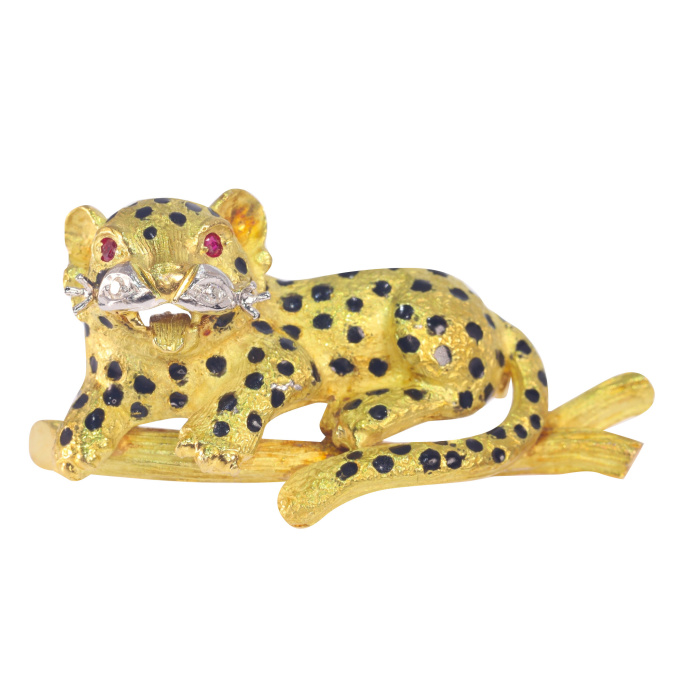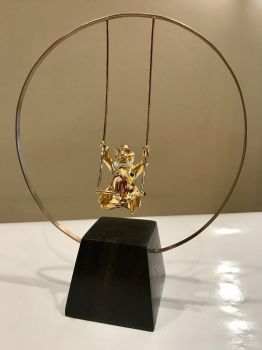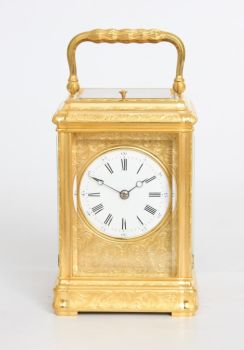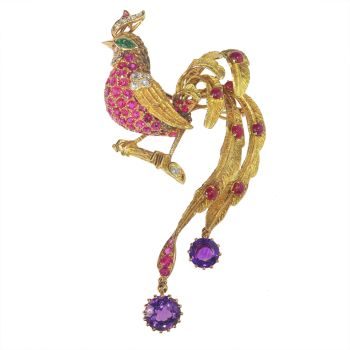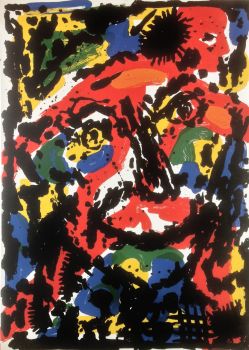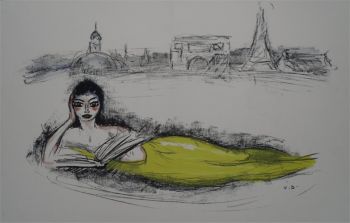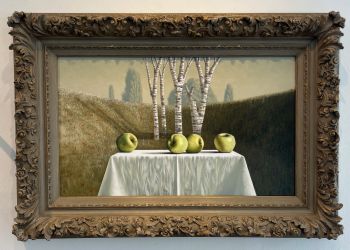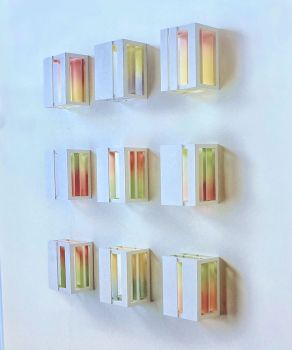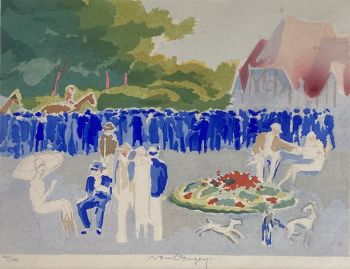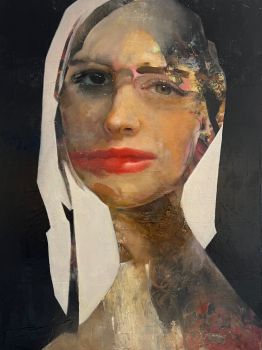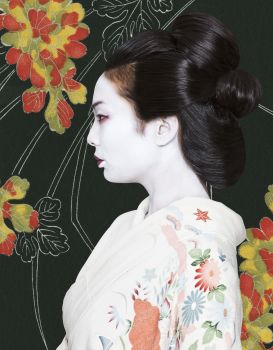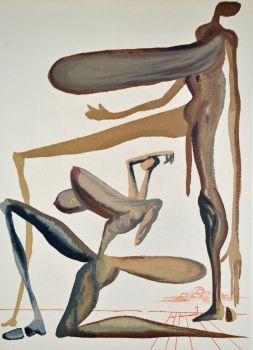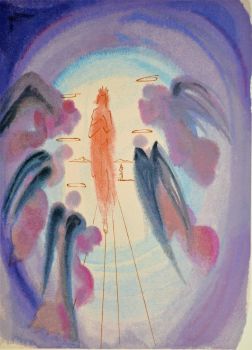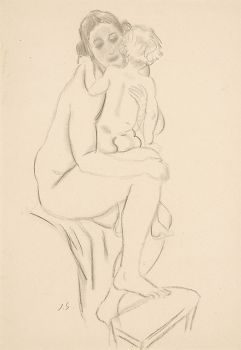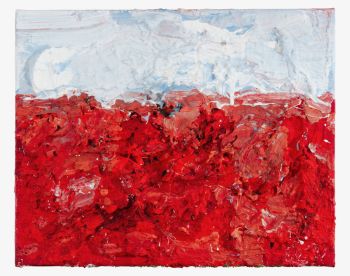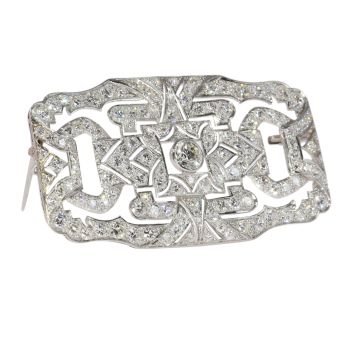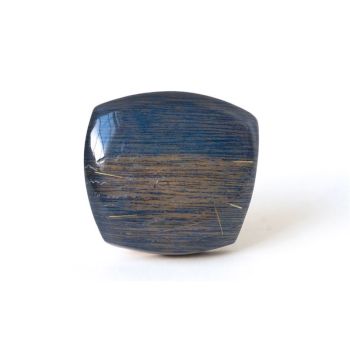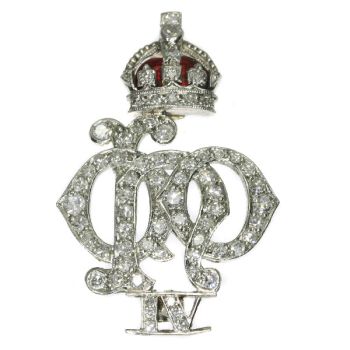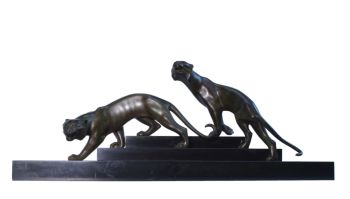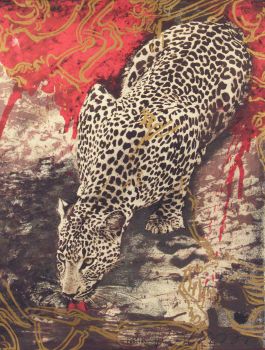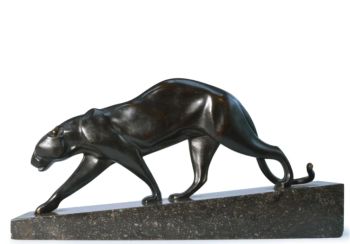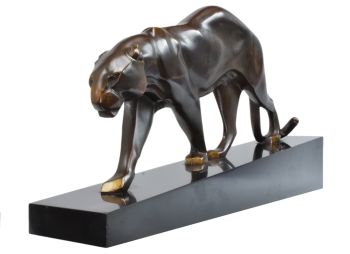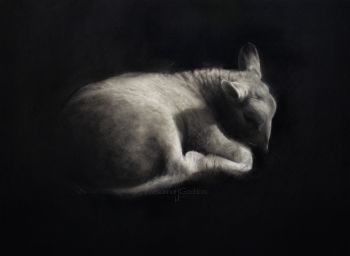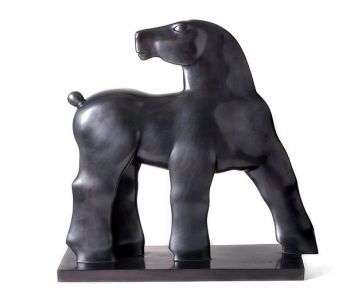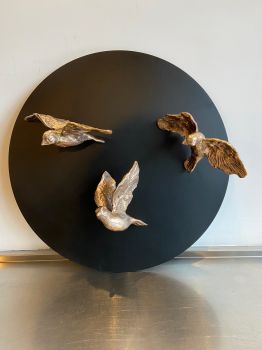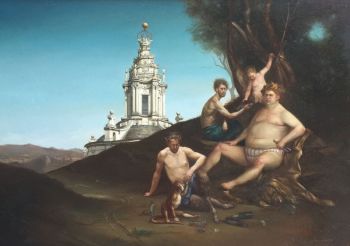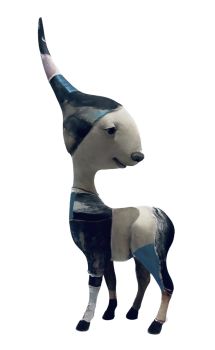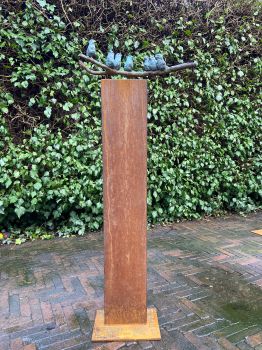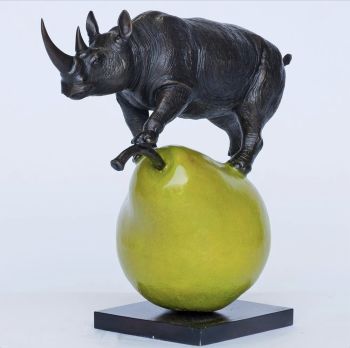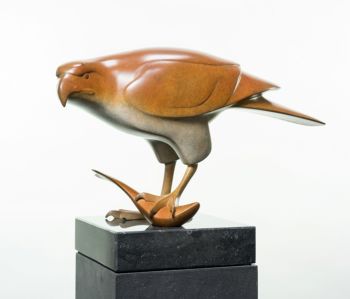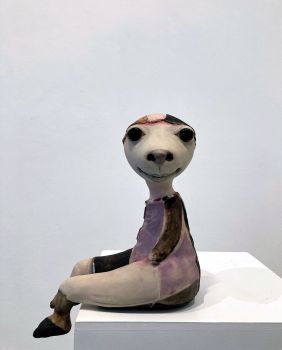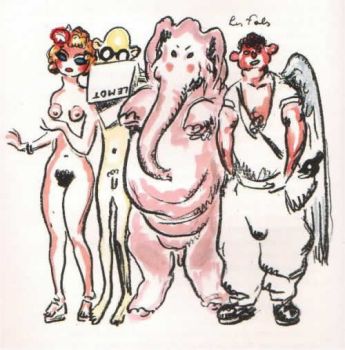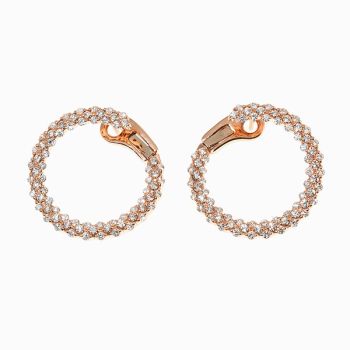Vintage 1960's 18K brooch leopard on branch 1960
Unbekannter Künstler
DiamantEmailleEdelstein
Derzeit nicht über Gallerease verfügbar
- Über Kunstwerk
Antique jewelry object group
brooch
Condition
very good condition
more info on our condition scale
Country of origin
unknown
Style
Vintage Sixties (of the twentieth century)
more info on styles
Period
ca. 1960
Events & facts of this era, poetry of this era, fashion of this era.
Source of inspiration
Mother Nature
Theme
leopard on branch
Material
18K yellow gold (touchstone tested)
more info on precious metals
Technique
Enamelling is an old and widely-adopted technology. The ancient Egyptians applied enamels to pottery and stone objects. The ancient Greeks, Celts, Russians, and Chinese also used enameling processes on metal objects. Enamel is the colorful result of fusing powdered glass to a substrate by firing, usually between 750 and 850 degrees Celsius. The powder melts and flows and hardens to a smooth, durable vitreous coating on metal, glass or ceramic. According to some sources, the word enamel comes from the High German word smelzan (to smelt) via the Old French esmail. Used as a noun, "an enamel" is a usually small decorative object, coated with enamel coating, such as a champlevé or a cloisonné (different techniques).
Diamonds
Two single brilliant cut diamonds (also called 8/8)with an estimated weight of ± 0.02ct colour and clarity F/H, si/i
All diamond weights, color grades and clarity are approximate since stones are not removed from their mounts to preserve the integrity of the setting.
All diamonds we offer are screened by the I.J.G.C. for whether they are natural or synthetic, and all diamonds in this jewel are 100% guaranteed to be natural.
Birthstones
Diamond is the birthstone (or month stone) for April.
more info on birthstones
Hallmarks
No trace.
more info on hallmarks
Dimensions
width 4,19 cm (1,65 inch)
see picture with a ruler in millimeters and inches
Weight
14,50 gram (9,32 dwt)
Adin Reference Nº
22130-0011
Copyright photography
Adin, fine antique jewellery
Additional information
our latest acquisitions
jewelry glossary
wall of fame
visit us in Antwerp
subscribe to our mailinglist
- Über Künstler
Es kann vorkommen, dass ein Künstler oder Hersteller unbekannt ist.
Bei einigen Werken ist nicht zu bestimmen, von wem sie hergestellt wurden, oder sie wurden von (einer Gruppe von) Handwerkern hergestellt. Beispiele sind Statuen aus der Antike, Möbel, Spiegel oder Signaturen, die nicht klar oder lesbar sind, aber auch einige Werke sind überhaupt nicht signiert.
Außerdem finden Sie folgende Beschreibung:
•"Zugeschrieben …." Ihrer Meinung nach wohl zumindest teilweise ein Werk des Künstlers
•„Atelier von ….“ oder „Werkstatt von“ Ihrer Meinung nach eine Arbeit, die im Atelier oder in der Werkstatt des Künstlers, möglicherweise unter seiner Aufsicht, ausgeführt wurde
•„Kreis von ….“ Ihrer Meinung nach ein Werk aus der Zeit des Künstlers, das seinen Einfluss zeigt, eng mit dem Künstler verbunden, aber nicht unbedingt sein Schüler
•"Art von …." oder „Anhänger von ….“ Ihrer Meinung nach eine Arbeit, die im Stil des Künstlers ausgeführt wurde, aber nicht unbedingt von einem Schüler; kann zeitgenössisch oder fast zeitgenössisch sein
•„Art von ….“ Ihrer Meinung nach ein Werk im Stil des Künstlers, aber späteren Datums
•"Nach …." Ihrer Meinung nach eine Kopie (jegliches Datums) eines Werks des Künstlers
• „Unterzeichnet …“, „Datiert …“. oder „Beschriftet“ Ihrer Meinung nach wurde das Werk vom Künstler signiert/datiert/beschriftet. Das Hinzufügen eines Fragezeichens weist auf einen Zweifel hin
• „Mit Unterschrift …“, „Mit Datum …“, „Mit Aufschrift ….“ oder „Trägt Unterschrift/Datum/Beschriftung“ ihrer Meinung nach die Unterschrift/Datum/Beschriftung von jemand anderem als dem Künstler hinzugefügt wurde
Artwork details
Related artworks
Unbekannter Künstler
A large Japanese Imari porcelain 'VOC Groningen' dish1800 - 1925
Preis auf AnfrageZebregs & Röell - Fine Art - Antiques
Unbekannter Künstler
Een Gotische zuidelijke Nederlanden wandklok1580 - 1590
Preis auf AnfrageNico van den Assem restauratie
1 - 4 / 12Jean-Claude Champagnat
French 18K gold vintage 1960's bejeweled bird of paradise brooch by Jean-Claude Champagnat1960
€ 12.500Adin Fine Antique Jewellery
 Kuratiert von
Kuratiert vonDanny Bree
1 - 4 / 24- 1 - 4 / 24
Samuel Dejong
Anatomia Blue Heritage, Hercules Open2017 - 2019
Preis auf AnfrageVilla del Arte Galleries
 Kuratiert von
Kuratiert vonGallerease Magazine
1 - 4 / 24- 1 - 4 / 24

